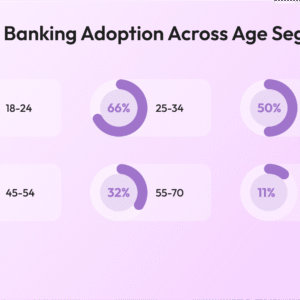
Data structure and algorithm offer the programmer a variety of options for handling the data effectively. If a programmer is unfamiliar with data structures and algorithms, they may fail to write efficient and correct code for their software. It is a fundamental building block of computer science and is essential for career success.
However, learning to apply the following techniques can be one of the milestones for people studying data structures and algorithms. Let’s explore some of the popular approaches to so solve DSA problems.

1. An incremental approach using single and nested loop
We develop the partial solution step by step using a loop, which is one of the straightforward concepts of our everyday problem-solving activities.
- Input-centric approach: We process one input and construct a partial solution at each iteration step.
- Output-focused strategy: We construct the partial solution at each iteration step by adding one output to the overall solution.
- An approach for iterative improvement: Here, we begin with a few readily accessible approximations of a solution and progressively enhance them to arrive at the ultimate solution.
Here are several loop-based strategies:
- Using variables and a single loop,
- Using variables and nested loops,
- Increasing the loop by a fixed amount (more than 1),
- Using a single loop with a prefix array (or more memory),
- Using the loop twice (double traversal), etc.
If you’re a student aspiring to become a software developer, explore the top full stack software development course in Bangalore.
2. Problem-solving using binary search
We can handle many searching problems effectively using the binary search concept in O(logn) time complexity when an array has some order property similar to the sorted array. To accomplish this, we must adapt the common binary search algorithm to the conditions specified in the challenge. The fundamental concept is straightforward: find the mid-index and iterate across either the left or right half of the array.
3. Decreases and conquer, divide and conquer, transform and conquer
This approach is based on identifying a problem’s solution from its single sub-problem. Such a strategy naturally results in a recursive algorithm, which breaks the problem down into a series of smaller input sizes until it shrinks to the point that it can be solved or until it hits the base case of the recursion.
4. Greedy approach
Extending a partially constructed solution until a full solution is attained resolves an optimization problem. We add a greedy choice to the partially built solution at each stage. Without going against the limitations of the problem, this concept generates the best overall solution.
In the hope that a series of locally optimum decisions will result in an overall (globally) optimal solution, the greedy choice is the best option available at each step.
This strategy succeeds in some circumstances but fails in others. Designing a greedy algorithm is typically not difficult; the challenge is demonstrating that it yields the best result.
5. Two pointers and sliding window
In the case of several searching problems on arrays and linked lists, the two-pointer technique aids in the optimization of time and space complexity. Pointers, in this case, could be references to objects or pairs of array indices. With this method, two different input sections will be iterated over simultaneously to complete fewer operations.
6. Problem-solving using BSF and DSF
DFS and BFS traversal can be used to address the majority of tree and graph problems.
We can pick BFS if the issue is to find something closer to the root (or source node), and we can choose DFS if we need to find something in-depth.
In situations where node order is not necessary, we can occasionally use both BFS and DFS traversals. Such things, however, are not always feasible. To effectively handle the issues, we must first determine the use cases for both traversals.
7. Problem-solving using data structures
One of the effective instruments for problem-solving in algorithms is the data structure. It enhances the temporal complexity of the solution and enables us to carry out some of the crucial tasks effectively. Some of the primary conclusions are listed below.:
An efficient technique to carry out the search, insert, and remove actions is necessary for many coding issues. The hash table allows us to complete all these tasks on average O(1) time. In order to increase performance, we use additional space to store elements in the hash table. This is a type of time-memory tradeoff.
To tackle various coding issues, we occasionally need to store data on a stack (LIFO order) or queue (FIFO order).
8. Dynamic programming
Dynamic programming is one of the most often used methods for resolving problems with overlapping or recurrent subproblems. In this case, we answer each smaller subproblem only once and keep the solutions in memory rather than addressing overlapping subproblems repeatedly. Many optimization and counting issues can be resolved using the dynamic programming concept.
9. Exhaustive search and backtracking
This approach investigates every potential course of action until a resolution to the issue is discovered. As a result, problems that can be solved using this method are rarely presented to a person. The main drawback of a thorough search is how ineffective it is. The approach is typically improper for a computer as well, as the number of solution candidates that must be analyzed typically grows at least exponentially with the complexity of the problem.
Backtracking is a better strategy than an extensive search. It is a technique for coming up with a solution while avoiding unneeded solutions’ possibilities! The fundamental concept is to develop a solution piece by piece and assess each incomplete solution.
10. Bit manipulation and number theory
Some code issues are mathematical, but occasionally we need to find the mathematical elements concealed within the issue. The concept of number theory and bit manipulation is therefore useful in various situations.
We can sometimes create an effective solution by analyzing the bit pattern of the input and processing data at the bit level. The best part is that the computer executes each bit-wise operation in a fixed amount of time. Even occasionally, bit manipulation can significantly increase performance by reducing the need for additional loops.
Hope you enjoyed reading this blog on DSA approaches. If you have any desire to master DSA for your career, look no further. Learnbay’s data structures and algorithms course will help you learn and become job-ready to ace your MNC interviews.
Author Profile
- I am the owner of the blog readree.com. My love for technology began at a young age, and I have been exploring every nook and cranny of it for the past eight years. In that time, I have learned an immense amount about the internet world, technology, Smartphones, Computers, Funny Tricks, and how to use the internet to solve common problems faced by people in their day-to-day lives. Through this blog, I aim to share all that I have learned with my readers so that they can benefit from it too. Connect with me : Sabinbaniya2002@gmail.com
Latest entries
 ArticleOctober 23, 2025How to Use Rotating Residential Proxies
ArticleOctober 23, 2025How to Use Rotating Residential Proxies ArticleOctober 19, 2025Why You Should Use Geo-Targeted Proxies for Web Scraping
ArticleOctober 19, 2025Why You Should Use Geo-Targeted Proxies for Web Scraping SoftwareOctober 15, 2025The Importance of Cyber Security in a Digitally Connected World
SoftwareOctober 15, 2025The Importance of Cyber Security in a Digitally Connected World BlogOctober 8, 2025The Most Recent Trends in Generative AI in the Banking Industry
BlogOctober 8, 2025The Most Recent Trends in Generative AI in the Banking Industry